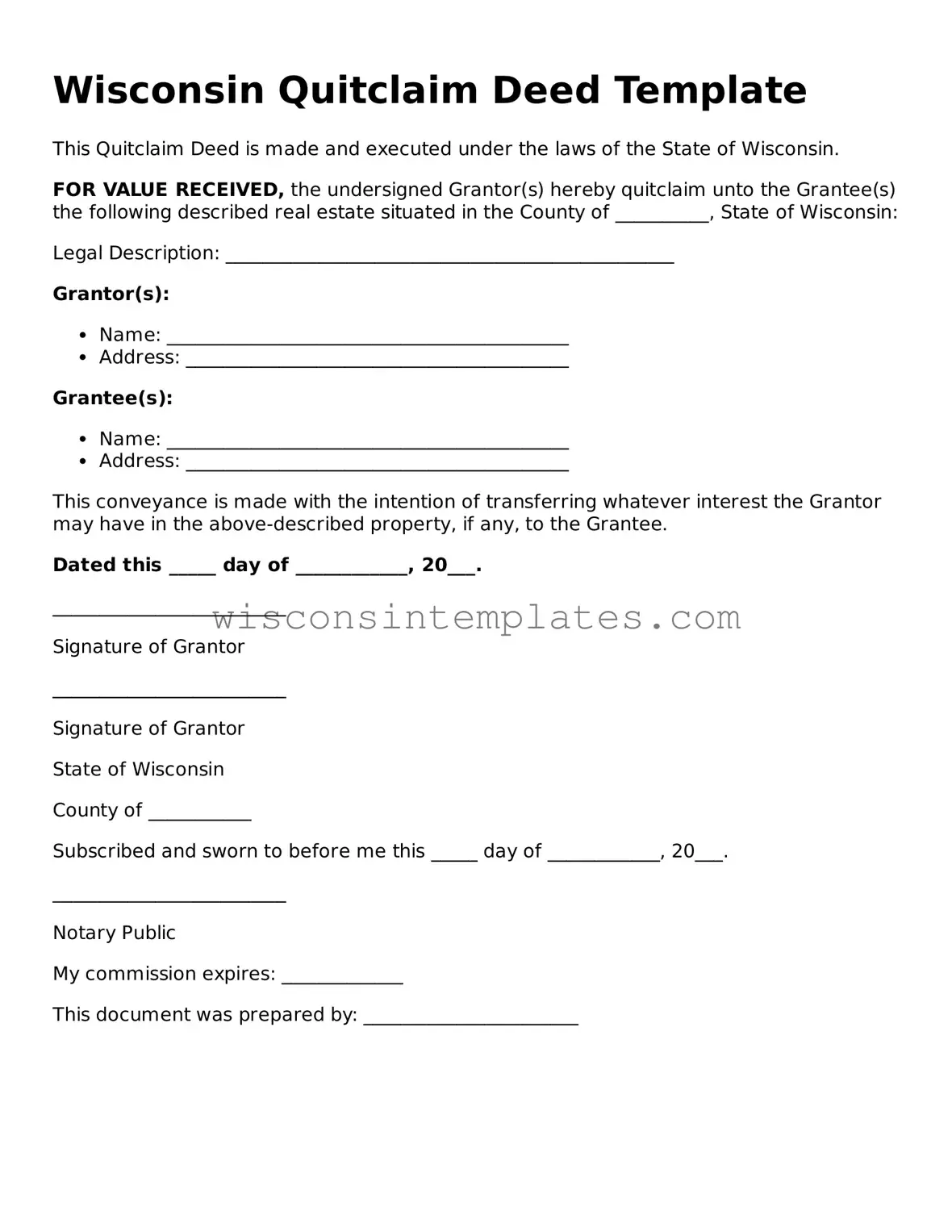The Wisconsin Quitclaim Deed form serves as a vital tool for property owners looking to transfer their interest in real estate without making any warranties about the title. This form is particularly useful in situations where the transfer is between family members, in divorce settlements, or during estate planning. By using a quitclaim deed, the grantor—who is the person transferring the property—essentially relinquishes any claim they have to the property, allowing the grantee, or recipient, to assume ownership. However, it's important to note that this type of deed does not guarantee that the title is free of defects or claims from other parties. The quitclaim deed must be properly filled out, signed, and notarized to be legally effective, and it should be recorded with the local register of deeds to provide public notice of the transfer. Understanding the implications of using a quitclaim deed is crucial, as it can significantly impact property rights and future ownership disputes. Overall, this form simplifies the process of property transfer, making it accessible for various personal and legal situations.
